April 29, 2024 · category article, imagination artificielle, intelligence artificielle, [une]
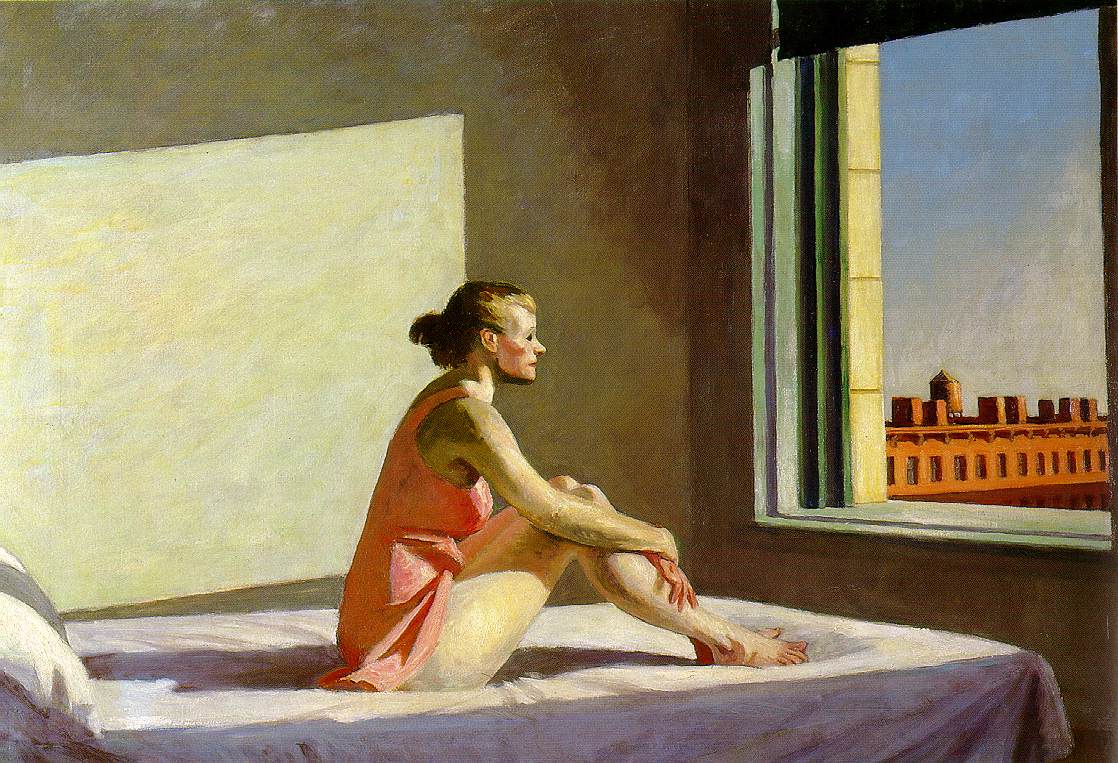 L’une des caractéristiques de la peinture de Hopper, tient à la mise en tension du hors-champ à partir de la représentation picturale. Les personnages sont immobiles, souvent le regard fixe, dans un instant de temps, qui loin de se refermer sur l’intérieur du tableau, appelle le hors-champ. Que cela soit dans Cape Cod morning, dans City Sunlight, dans Morning sun : les femmes représentées, font face à des fenêtres et regardent vers un extérieur dont le spectateur est privé.
L’une des caractéristiques de la peinture de Hopper, tient à la mise en tension du hors-champ à partir de la représentation picturale. Les personnages sont immobiles, souvent le regard fixe, dans un instant de temps, qui loin de se refermer sur l’intérieur du tableau, appelle le hors-champ. Que cela soit dans Cape Cod morning, dans City Sunlight, dans Morning sun : les femmes représentées, font face à des fenêtres et regardent vers un extérieur dont le spectateur est privé.
En poursuivant la série Completion, je me suis intéressé à ce hors-champ. Il n’existera plus car Hopper est mort. On ne saura jamais ce que ces personnages regardaient. Pourquoi ils étaient ainsi pris par ce qui n’apparaît pas dans l’espace pictural.
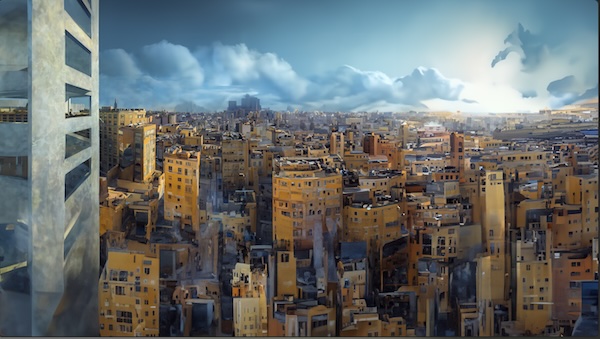 L’IA utilisée dans ce travail ne génère pas avec des prompts. C’est un double processus. d’IA qui a lieu : 1/ le premier est une analyse de l’image 2/ une complétion de l’image à partir de la perception artificielle . L’IA, quelque soit les fantasmes qu’on veuille lui prêter, au niveau de la génération, fonctionne par une induction statistique qui correspond donc à un champ de probabilité de concordance. C’est en ce sens qu’elle ne crée rien d’extraordinaire, mais elle se conforme à un attendu. La question serait e savoir jusque’à quel point elle se conforme. En ce sens, l’ontologie du réel de l’imagination artificielle est strictement tenu dans un déploiement logico-mathématique, même si nous avons l’impression d’une forme de liberté de création dans le processus. Ce qui est survient comme extraordinaire tient surtout à la définition du prompt (recherche à la fois du contenu – et c’est pour cela qu’il y a autant de génération surréaliste ou fantastique ou SF – et des règles de visualisation du contenu). Sans prompts, l’IA générative produit l’image qui sera la plus probable à partir de son contexte. Et de fait c’est cela qu’il faut souligner : l’IA ne créera aucun autre événement dans l’image que de poursuivre un hors-champ à partir du champ.
L’IA utilisée dans ce travail ne génère pas avec des prompts. C’est un double processus. d’IA qui a lieu : 1/ le premier est une analyse de l’image 2/ une complétion de l’image à partir de la perception artificielle . L’IA, quelque soit les fantasmes qu’on veuille lui prêter, au niveau de la génération, fonctionne par une induction statistique qui correspond donc à un champ de probabilité de concordance. C’est en ce sens qu’elle ne crée rien d’extraordinaire, mais elle se conforme à un attendu. La question serait e savoir jusque’à quel point elle se conforme. En ce sens, l’ontologie du réel de l’imagination artificielle est strictement tenu dans un déploiement logico-mathématique, même si nous avons l’impression d’une forme de liberté de création dans le processus. Ce qui est survient comme extraordinaire tient surtout à la définition du prompt (recherche à la fois du contenu – et c’est pour cela qu’il y a autant de génération surréaliste ou fantastique ou SF – et des règles de visualisation du contenu). Sans prompts, l’IA générative produit l’image qui sera la plus probable à partir de son contexte. Et de fait c’est cela qu’il faut souligner : l’IA ne créera aucun autre événement dans l’image que de poursuivre un hors-champ à partir du champ.
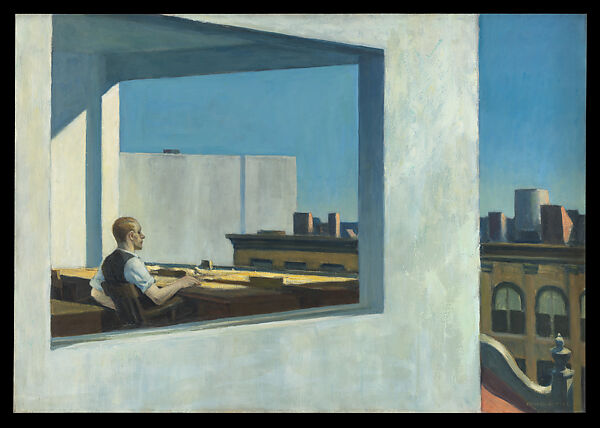 C’est pour cela que cette série de Complétion s’appelle : No camera-off event. Pas d’événement hors-champ. La solitude des personnages de Hopper est ainsi renforcé. Le spectateur n’aura pas la clé du hors-champ, car l’IA poursuivant l’exploration d’un espace ne pense pas la catégorie de l’événement. Elle ne crée pas de « Il arrive ». Cette nouvelle série d’exploration de Hopper se structure tout à la fois sur la production d’images de très grand format (par exemple 16000X8000 pixels) et sur des vidéos qui mettent en tension la liaison entre le champ et le hors-champ.
C’est pour cela que cette série de Complétion s’appelle : No camera-off event. Pas d’événement hors-champ. La solitude des personnages de Hopper est ainsi renforcé. Le spectateur n’aura pas la clé du hors-champ, car l’IA poursuivant l’exploration d’un espace ne pense pas la catégorie de l’événement. Elle ne crée pas de « Il arrive ». Cette nouvelle série d’exploration de Hopper se structure tout à la fois sur la production d’images de très grand format (par exemple 16000X8000 pixels) et sur des vidéos qui mettent en tension la liaison entre le champ et le hors-champ.
// English
One of the characteristics of Hopper’s painting is the tension created off-screen based on the pictorial representation. The characters are immobile, often with a fixed gaze, in a moment of time, which far from closing on the interior of the painting, calls out to the off-camera. Whether in Cape Cod morning, in City Sunlight, in Morning sun: the women represented face windows and look towards an exterior of which the viewer is deprived. While continuing the Completion series, I became interested in this off-camera. He will no longer exist because Hopper is dead. We will never know what these characters were looking at. Why were they so taken by what does not appear in pictorial space.
The AI used in this work does not generate with prompts. It is a double process. of AI which takes place: 1/ the first is an analysis of the image 2/ a completion of the image from artificial perception.
 AI, whatever fantasies we want to attribute to it, at the generation level, works by statistical induction which therefore corresponds to a concordance probability field. It is in this sense that it does not create anything extraordinary, but it conforms to an expectation. The question would be to what extent she complies. In this sense, the ontology of reality of artificial imagination is strictly held in a logical-mathematical deployment, even if we have the impression of a form of creative freedom in the process.
AI, whatever fantasies we want to attribute to it, at the generation level, works by statistical induction which therefore corresponds to a concordance probability field. It is in this sense that it does not create anything extraordinary, but it conforms to an expectation. The question would be to what extent she complies. In this sense, the ontology of reality of artificial imagination is strictly held in a logical-mathematical deployment, even if we have the impression of a form of creative freedom in the process.
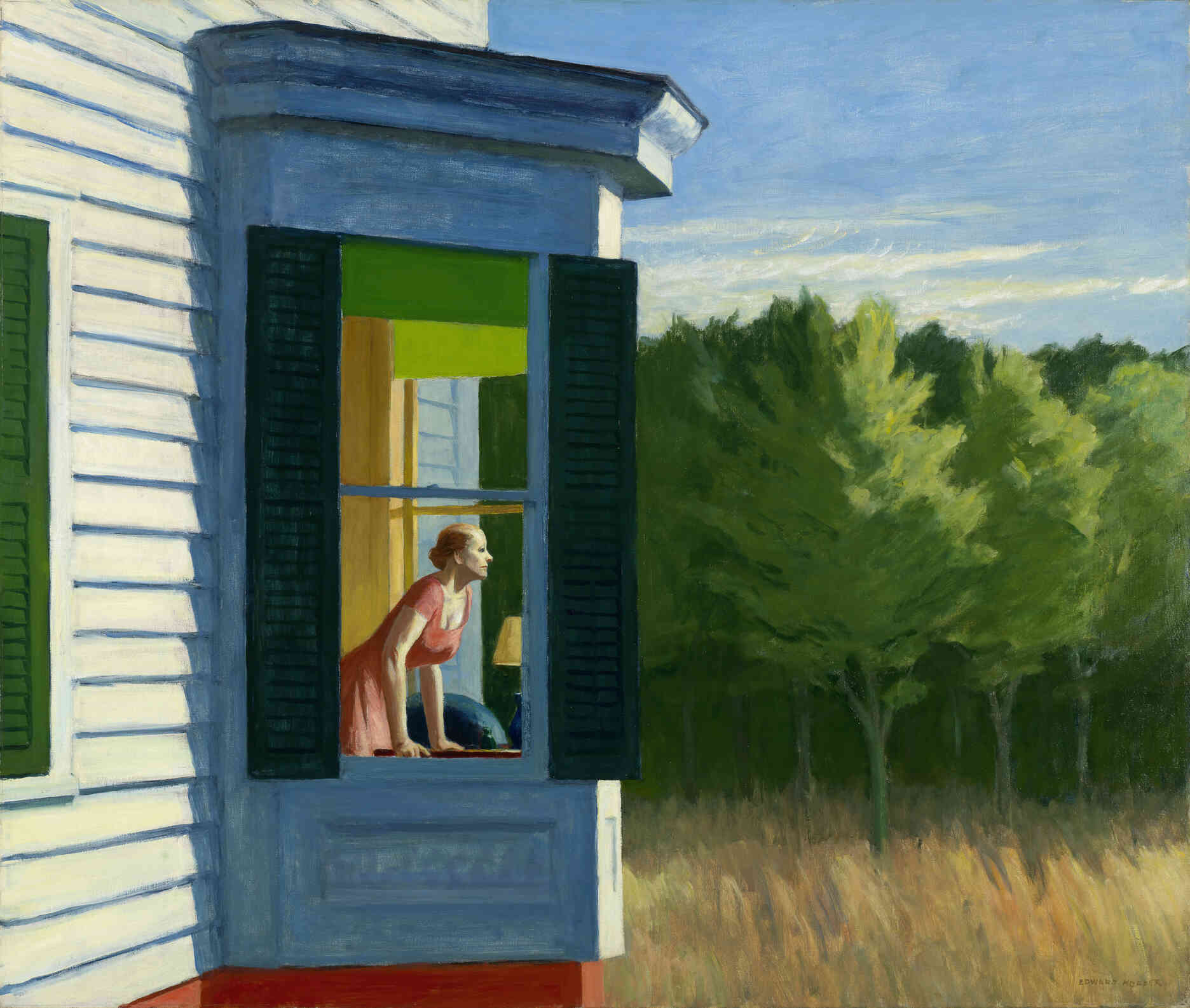 What emerges as extraordinary is mainly due to the definition of the prompt (search for both content – and this is why there is so much surrealist or fantastic or SF generation – and the rules for viewing the content). Without prompts, generative AI produces the image that will be most likely from its context. And in fact this is what must be emphasized: the AI will not create any other event in the image than to pursue an off-camera from the frame. This is why this Completion series is called: No camera-off event. No off-screen events.
What emerges as extraordinary is mainly due to the definition of the prompt (search for both content – and this is why there is so much surrealist or fantastic or SF generation – and the rules for viewing the content). Without prompts, generative AI produces the image that will be most likely from its context. And in fact this is what must be emphasized: the AI will not create any other event in the image than to pursue an off-camera from the frame. This is why this Completion series is called: No camera-off event. No off-screen events.
The solitude of Hopper’s characters is thus reinforced. The spectator will not have the key to the off-camera, because the AI continuing to explore a space does not think about the category of the event. It doesn’t create “He’s coming.” This new exploration series by Hopper is structured both on the production of very large format images (for example 16000X8000 pixels) and on videos which tension the connection between the on-camera and off-camera.
April 22, 2024 · category article, imagination artificielle, intelligence artificielle, photographie, [théorie], [une]
// French – English below
 Notre mémoire, parfois nous le regrettons, est fragmentaire. Pendant des siècles, il n’y eut que la rétention parla conscience et ses potentialités mnésiques pour se souvenir en image d’un passé. Que l’on avait vécu, ou bien que l’on avait entendu. La photographie a changé cela. Alors que la mémoire eidétique est très rare chez l’être humain, avec la photiographie, on a pu faire des ponctions dans le réel. Regarder une photo c’est revoir un fragment (temprorel et spatial du passé) de ce qui a eu lieu.
Notre mémoire, parfois nous le regrettons, est fragmentaire. Pendant des siècles, il n’y eut que la rétention parla conscience et ses potentialités mnésiques pour se souvenir en image d’un passé. Que l’on avait vécu, ou bien que l’on avait entendu. La photographie a changé cela. Alors que la mémoire eidétique est très rare chez l’être humain, avec la photiographie, on a pu faire des ponctions dans le réel. Regarder une photo c’est revoir un fragment (temprorel et spatial du passé) de ce qui a eu lieu.
Mais il y a toujours du hors-champ. Le hors-champ c’est ce qui a échappé à la captation et la mémoire technique. On peut ainsi penser la photographie comme une prothèse technique de notre mémoire. Une extension. Cependant cette mémoire est limitée, elle est aussi fragmentaire. Elle est un segment infime de l’espace et du temps. Une portion.
Avec Complétion, il m’est apparu nécessaire d’interroger la question du hors-champ à l’ère des IA : si le hors champ de ce qui a été mémorisé est ce qui a disparu, que je ne peux qu’imaginer, comment peut-il être abordé et qu’est-ce qu’il ouvre à partir des inférences des IA. Comment une IA peut-elle imaginer un hors-champ ? La complétion, au niveau des logiciels, c’est la possibilité automatisée de compléter des données partielles. Ici, la donnée fournie est une photographie, cadrée, il s’agit alors de compléter son hors-champ, de produire son contexte.
Pour la série Complétion, j’ai pris des images historiques. Dont je n’ai pas été le témoin. Dont peut-être plus personne ici, vivant, ne pourra de même témoigner maintenant ou plus tard. Et j’ai utiliser une IA qui fonctionne sans prompt, pour qu’elle imagine à partir de la scène les hors-champs. Le fait que l’IA fonctionne sans aucun prompt est important, car cela met en avant un processus d’imagination artificielle sans vecteur déterminant linguistique de la part de l’utilisateur. L’IA n’a que le contexte photographique. Ici, l’IA fonctionne en deux temps : tout d’abord il y a une perception machine du contexte et une analyse, ensuite, elle produit et complète l’image d’un point de vue génératif. Sans le prompt, elle infère la suite (le hors-champ) de l’image sans autre référence que ce qu’elle en comprend. Complétion ouvre ainsi à une réflexion à une autonomie de l’imaginaire. Alors qu’avec le prompt, on dirige (on induit une vectorialité sémiotique et sémantique dans le modèle), ici on demande seulement à l’IA d’imaginer à partir de sa perception ce que pourrait être le hors champ. Avec Midjourney, ou bien Dall-E 2, l’utilisateur est comme un maître qui donne le sujet que doit réaliser un élève. Complétion propose à une imagination artificielle de générer, sans autre processus que sa propre compréhension non induite, le contexte d’une image.
Boulevard du Temple photographie en daguerréotype réalisée à Paris en 1838 par l’inventeur du procédé, Louis Daguerre. Ce serait la première ou l’une des premières photographie de l’histoire de l’humanité. Et surtout la première photographie où il. aurait un être humain (un cireur de chaussure). La deuxième, est une des photographies de Amstrong sur la lune. Le premier pas de l’homme sur notre satellite. La troisième est celle du Général Degaulle au Québec. La quatrième est celle du jour de l’assassinat de JFK.
1838 – Louis Daguerre réalise la première photographie : Boulevard du Temple. Première captation mécanique, première mémoire technique de l’image. Plus de témoins de ce qui apparaissait hors-champ. La série Complétion se présente comme une complétion du hors-champ par une IA (et ceci sans la détermination du moindre prompt). L’IA, à partir seulement de ce qu’elle peut inférer selon sa perception algorithmique du donné du pixel, vient compléter la photographie, vient constituer ce hors-champ impossible. La photographie générée fait 10000 / 7841 pixels en 300ppp
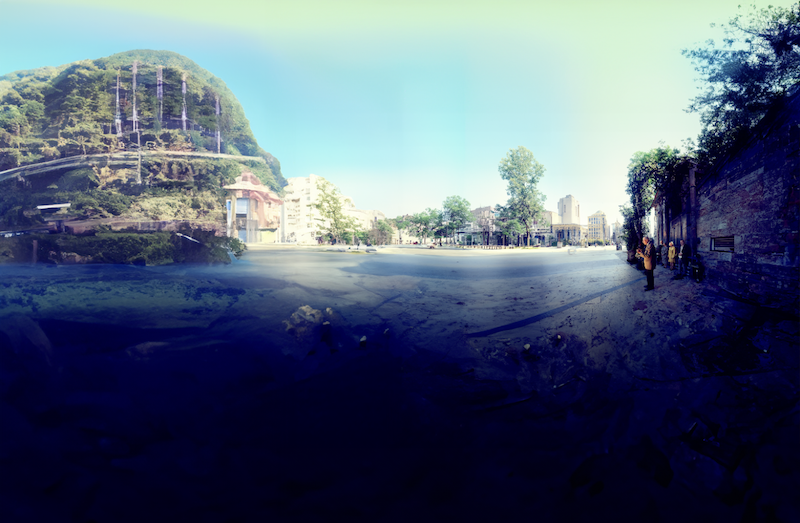 Degaulle le 24 – juillet 1967 à Montréal – La photographie est serrée. Le général Degaulle est au premier plan. Dans le paroxysme de son éloquence, il énonce avec force : "Vive le Québec libre". 15000 personnes à le regarder. Les IA génératives sont entrainées avec des sets d’images et des classements linguistiques qui permettent une génération selon une inférence statistique.
Degaulle le 24 – juillet 1967 à Montréal – La photographie est serrée. Le général Degaulle est au premier plan. Dans le paroxysme de son éloquence, il énonce avec force : "Vive le Québec libre". 15000 personnes à le regarder. Les IA génératives sont entrainées avec des sets d’images et des classements linguistiques qui permettent une génération selon une inférence statistique.
En ce sens, l’IA générative ne recherche pas ce qui fait rupture, mais ce qui correspond plus ou moins avec des récurrences, des répétitions, analysées lors des analyses sets d’images. De sorte que les modèles courants qui sont conçus (Midjourney, Dall E 2, Gemini) sont normalisés. S’il y a surprise dans l’image (ou une sorte de réalité qui rompt l’ordinaire) cela provient de l’input de l’utilisateur. Hormis cela, l’IA produit ce qui lui paraît statistiquement le plus probable.
COMPLETION utilise une IA générative sans prompt. Donc l’IA ne se fonde que sur le contexte des données pixels pour déterminer la complétion de l’image. Il n’y a aucune forme d’influence de la part de l’utilisateur. C’est en ce sens que l’IA ne peut envisager d’événement. L’événement pour reprendre Alain Badiou : “ouvre la possibilité qu’une vérité inédite surgisse dans un monde donné”. C’est ce qui vient faire effraction dans l’être (qui est gouverné par Badiou par le mathème, donc l’ordre logis-mathématique). L’événement c’est ce qui fait histoire. Or, si l’IA génère à partir d’une induction statistique, sans autre influence elle va produire du monde selon l’être au sens de Badiou et non pas l’événement.
COMPLETION – 3 – John F. Kennedyen voiture lieu le i 22 novembre 1963 – L’événement historique ici n’aura pas lieu, n’aura pas eu lieu. Car l’espace complété du hors champs n’est pas Dallas. JFK est dans une autre ville, d’un autre temps. La voiture roule, mais personne ne regarde. Le monde est vide. Il n’est pas vidé, car personne n’est jamais venu. Car cette voiture implique un contexte sans histoire, car l’imagination qui imagine ce réel-là, par sa logique inductive, par sa logique statistique, ne peut imaginer ce qui viendrait rompre la chaîne logique d’une ville statistiquement régulière. Seul, un tueur, peut imaginer de rompre la ville régulière et le chemin régulier d’un président qui parade dans une ville.
. //english
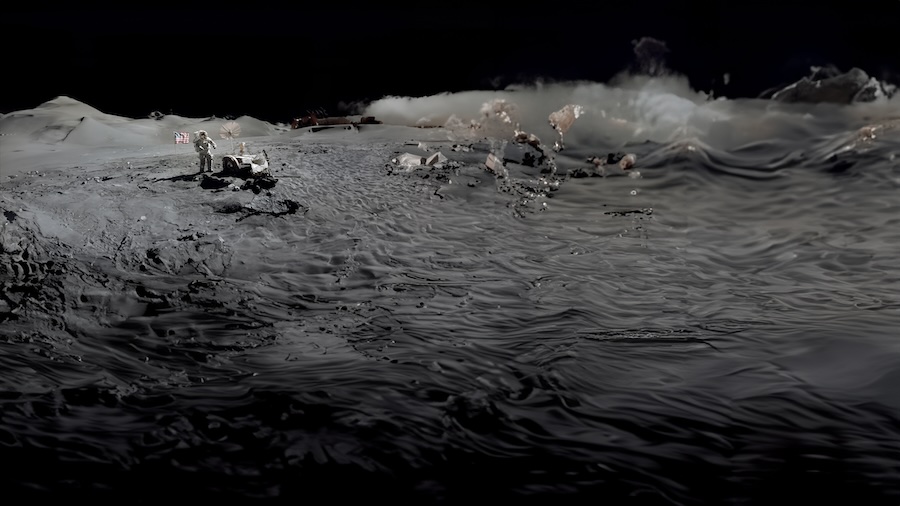 Our memory, sometimes we regret it, is fragmentary. For centuries, there was only retention by consciousness and its memory potential to remember the past in images. That we had experienced, or that we had heard. Photography changed that. While eidetic memory is very rare in humans, with photography, we have been able to make punctures from reality. Looking at a photo is seeing a fragment (temporal and spatial of the past) of what took place. But there is always something off-camera. The off-camera is what has escaped capture and technical memory. We can thus think of photography as a technical prosthesis of our memory. An extension. However, this memory is limited, it is also fragmentary. It is a tiny segment of space and time. A portion.
Our memory, sometimes we regret it, is fragmentary. For centuries, there was only retention by consciousness and its memory potential to remember the past in images. That we had experienced, or that we had heard. Photography changed that. While eidetic memory is very rare in humans, with photography, we have been able to make punctures from reality. Looking at a photo is seeing a fragment (temporal and spatial of the past) of what took place. But there is always something off-camera. The off-camera is what has escaped capture and technical memory. We can thus think of photography as a technical prosthesis of our memory. An extension. However, this memory is limited, it is also fragmentary. It is a tiny segment of space and time. A portion.
With Completion, it seemed necessary to me to question the question of off-camera in the age of AI: if the off-camera of what was memorized is what has disappeared, which I can only imagine, how can it be addressed and what does it open up from AI inferences. How can an AI imagine something off-camera? Completion, at the software level, is the automated possibility of completing partial data. Here, the data provided is a photograph, framed, it is then a question of completing its off-camera, of producing its context.
For the Completion series, I took historical images. Which I did not witness. To which perhaps no one here, alive, will be able to bear witness now or later. And I used an AI that works without prompts, so that it can imagine things off-camera from the scene. The fact that the AI operates without any prompt is important, because it highlights a process of artificial imagination without a linguistic determining vector on the part of the user. The AI only has photographic context. Here, the AI works in two stages: first there is a machine perception of the context and an analysis, then it produces and completes the image from a generative point of view. Without the prompt, it infers the rest (off-camera) of the image without any other reference than what it understands. Completion thus opens up a reflection on the autonomy of the imagination. Whereas with the prompt, we direct (we induce a semiotic and semantic vectorality in the model), here we only ask the AI to imagine from its perception what the off-camera could be. With Midjourney, or Dall-E 2, the user is like a teacher who gives the subject that a student must complete. Completion allows an artificial imagination to generate, without any process other than its own uninduced understanding, the context of an image.
The two photographs proposed in this article: Boulevard du Temple daguerreotype photograph taken in Paris in 1838 by the inventor of the process, Louis Daguerre. It would be the first or one of the first photographs in the history of humanity. The second is one of Amsrong’s photographs on the moon. Man’s first step on our satellite.
1838 – Louis Daguerre made the first photograph: Boulevard du Temple. First mechanical capture, first technical memory of the image. No more witnesses to what appeared off-camera. The Complétion series presents itself as an off-screen completion by an AI (and this without the slightest determination). The AI, based only on what it can infer according to its algorithmic perception of the given pixel, completes the photography, constitutes this impossible off-camera.
Degaulle on July 24, 1967 in Montreal – The photography is tight. General Degaulle is in the foreground. In the paroxysm of his eloquence, he forcefully stated: “Long live free Quebec.” 15,000 people watching it.
Generative AIs are trained with sets of images and linguistic classifications which allow generation according to statistical inference. In this sense, generative AI does not look for what breaks, but what corresponds more or less with recurrences, repetitions, analyzed during image set analyses. So the common models that are designed (Midjourney, Dall E 2, Gemini) are standardized. If there is surprise in the image (or some sort of reality that breaks the ordinary) it comes from user input. Aside from that, the AI produces what appears statistically most likely to it. COMPLETION uses generative AI without prompting. So the AI only relies on the context of the pixel data to determine image completion. There is no form of influence from the user.
It is in this sense that the AI cannot envisage an event. The event, to quote Alain Badiou: “opens the possibility of an unprecedented truth emerging in a given world”. This is what breaks into being (which is governed by Badiou by the matheme, therefore the logis-mathematical order). The event is what makes history. However, if AI generates from statistical induction, without any other influence it will produce the world according to being in the sense of Badiou and not the event.
Degaulle’s photography is tight. We don’t see the 15,000 people. And for the AI, its imagination cannot imagine them. As she cannot imagine what Quebec or freedom is. She only imagines the city according to the highest probability in view of her perception of the image. And Degaulle is alone facing the silence of space.
 L’une des caractéristiques de la peinture de Hopper, tient à la mise en tension du hors-champ à partir de la représentation picturale. Les personnages sont immobiles, souvent le regard fixe, dans un instant de temps, qui loin de se refermer sur l’intérieur du tableau, appelle le hors-champ. Que cela soit dans Cape Cod morning, dans City Sunlight, dans Morning sun : les femmes représentées, font face à des fenêtres et regardent vers un extérieur dont le spectateur est privé.
L’une des caractéristiques de la peinture de Hopper, tient à la mise en tension du hors-champ à partir de la représentation picturale. Les personnages sont immobiles, souvent le regard fixe, dans un instant de temps, qui loin de se refermer sur l’intérieur du tableau, appelle le hors-champ. Que cela soit dans Cape Cod morning, dans City Sunlight, dans Morning sun : les femmes représentées, font face à des fenêtres et regardent vers un extérieur dont le spectateur est privé.  L’IA utilisée dans ce travail ne génère pas avec des prompts. C’est un double processus. d’IA qui a lieu : 1/ le premier est une analyse de l’image 2/ une complétion de l’image à partir de la perception artificielle . L’IA, quelque soit les fantasmes qu’on veuille lui prêter, au niveau de la génération, fonctionne par une induction statistique qui correspond donc à un champ de probabilité de concordance. C’est en ce sens qu’elle ne crée rien d’extraordinaire, mais elle se conforme à un attendu. La question serait e savoir jusque’à quel point elle se conforme. En ce sens, l’ontologie du réel de l’imagination artificielle est strictement tenu dans un déploiement logico-mathématique, même si nous avons l’impression d’une forme de liberté de création dans le processus. Ce qui est survient comme extraordinaire tient surtout à la définition du prompt (recherche à la fois du contenu – et c’est pour cela qu’il y a autant de génération surréaliste ou fantastique ou SF – et des règles de visualisation du contenu). Sans prompts, l’IA générative produit l’image qui sera la plus probable à partir de son contexte. Et de fait c’est cela qu’il faut souligner : l’IA ne créera aucun autre événement dans l’image que de poursuivre un hors-champ à partir du champ.
L’IA utilisée dans ce travail ne génère pas avec des prompts. C’est un double processus. d’IA qui a lieu : 1/ le premier est une analyse de l’image 2/ une complétion de l’image à partir de la perception artificielle . L’IA, quelque soit les fantasmes qu’on veuille lui prêter, au niveau de la génération, fonctionne par une induction statistique qui correspond donc à un champ de probabilité de concordance. C’est en ce sens qu’elle ne crée rien d’extraordinaire, mais elle se conforme à un attendu. La question serait e savoir jusque’à quel point elle se conforme. En ce sens, l’ontologie du réel de l’imagination artificielle est strictement tenu dans un déploiement logico-mathématique, même si nous avons l’impression d’une forme de liberté de création dans le processus. Ce qui est survient comme extraordinaire tient surtout à la définition du prompt (recherche à la fois du contenu – et c’est pour cela qu’il y a autant de génération surréaliste ou fantastique ou SF – et des règles de visualisation du contenu). Sans prompts, l’IA générative produit l’image qui sera la plus probable à partir de son contexte. Et de fait c’est cela qu’il faut souligner : l’IA ne créera aucun autre événement dans l’image que de poursuivre un hors-champ à partir du champ.  C’est pour cela que cette série de Complétion s’appelle : No camera-off event. Pas d’événement hors-champ. La solitude des personnages de Hopper est ainsi renforcé. Le spectateur n’aura pas la clé du hors-champ, car l’IA poursuivant l’exploration d’un espace ne pense pas la catégorie de l’événement. Elle ne crée pas de « Il arrive ». Cette nouvelle série d’exploration de Hopper se structure tout à la fois sur la production d’images de très grand format (par exemple 16000X8000 pixels) et sur des vidéos qui mettent en tension la liaison entre le champ et le hors-champ.
C’est pour cela que cette série de Complétion s’appelle : No camera-off event. Pas d’événement hors-champ. La solitude des personnages de Hopper est ainsi renforcé. Le spectateur n’aura pas la clé du hors-champ, car l’IA poursuivant l’exploration d’un espace ne pense pas la catégorie de l’événement. Elle ne crée pas de « Il arrive ». Cette nouvelle série d’exploration de Hopper se structure tout à la fois sur la production d’images de très grand format (par exemple 16000X8000 pixels) et sur des vidéos qui mettent en tension la liaison entre le champ et le hors-champ. AI, whatever fantasies we want to attribute to it, at the generation level, works by statistical induction which therefore corresponds to a concordance probability field. It is in this sense that it does not create anything extraordinary, but it conforms to an expectation. The question would be to what extent she complies. In this sense, the ontology of reality of artificial imagination is strictly held in a logical-mathematical deployment, even if we have the impression of a form of creative freedom in the process.
AI, whatever fantasies we want to attribute to it, at the generation level, works by statistical induction which therefore corresponds to a concordance probability field. It is in this sense that it does not create anything extraordinary, but it conforms to an expectation. The question would be to what extent she complies. In this sense, the ontology of reality of artificial imagination is strictly held in a logical-mathematical deployment, even if we have the impression of a form of creative freedom in the process. What emerges as extraordinary is mainly due to the definition of the prompt (search for both content – and this is why there is so much surrealist or fantastic or SF generation – and the rules for viewing the content). Without prompts, generative AI produces the image that will be most likely from its context. And in fact this is what must be emphasized: the AI will not create any other event in the image than to pursue an off-camera from the frame. This is why this Completion series is called: No camera-off event. No off-screen events.
What emerges as extraordinary is mainly due to the definition of the prompt (search for both content – and this is why there is so much surrealist or fantastic or SF generation – and the rules for viewing the content). Without prompts, generative AI produces the image that will be most likely from its context. And in fact this is what must be emphasized: the AI will not create any other event in the image than to pursue an off-camera from the frame. This is why this Completion series is called: No camera-off event. No off-screen events. Notre mémoire, parfois nous le regrettons, est fragmentaire. Pendant des siècles, il n’y eut que la rétention parla conscience et ses potentialités mnésiques pour se souvenir en image d’un passé. Que l’on avait vécu, ou bien que l’on avait entendu. La photographie a changé cela. Alors que la mémoire eidétique est très rare chez l’être humain, avec la photiographie, on a pu faire des ponctions dans le réel. Regarder une photo c’est revoir un fragment (temprorel et spatial du passé) de ce qui a eu lieu.
Notre mémoire, parfois nous le regrettons, est fragmentaire. Pendant des siècles, il n’y eut que la rétention parla conscience et ses potentialités mnésiques pour se souvenir en image d’un passé. Que l’on avait vécu, ou bien que l’on avait entendu. La photographie a changé cela. Alors que la mémoire eidétique est très rare chez l’être humain, avec la photiographie, on a pu faire des ponctions dans le réel. Regarder une photo c’est revoir un fragment (temprorel et spatial du passé) de ce qui a eu lieu.  Degaulle le 24 – juillet 1967 à Montréal – La photographie est serrée. Le général Degaulle est au premier plan. Dans le paroxysme de son éloquence, il énonce avec force : "Vive le Québec libre". 15000 personnes à le regarder. Les IA génératives sont entrainées avec des sets d’images et des classements linguistiques qui permettent une génération selon une inférence statistique.
Degaulle le 24 – juillet 1967 à Montréal – La photographie est serrée. Le général Degaulle est au premier plan. Dans le paroxysme de son éloquence, il énonce avec force : "Vive le Québec libre". 15000 personnes à le regarder. Les IA génératives sont entrainées avec des sets d’images et des classements linguistiques qui permettent une génération selon une inférence statistique.  Our memory, sometimes we regret it, is fragmentary. For centuries, there was only retention by consciousness and its memory potential to remember the past in images. That we had experienced, or that we had heard. Photography changed that. While eidetic memory is very rare in humans, with photography, we have been able to make punctures from reality. Looking at a photo is seeing a fragment (temporal and spatial of the past) of what took place. But there is always something off-camera. The off-camera is what has escaped capture and technical memory. We can thus think of photography as a technical prosthesis of our memory. An extension. However, this memory is limited, it is also fragmentary. It is a tiny segment of space and time. A portion.
Our memory, sometimes we regret it, is fragmentary. For centuries, there was only retention by consciousness and its memory potential to remember the past in images. That we had experienced, or that we had heard. Photography changed that. While eidetic memory is very rare in humans, with photography, we have been able to make punctures from reality. Looking at a photo is seeing a fragment (temporal and spatial of the past) of what took place. But there is always something off-camera. The off-camera is what has escaped capture and technical memory. We can thus think of photography as a technical prosthesis of our memory. An extension. However, this memory is limited, it is also fragmentary. It is a tiny segment of space and time. A portion.